In This Article

I admit it. I was an advertising basher. I thought that paying for advertising a small business was a waste of money with little to no return. But I was so wrong.
Paid advertising can be a solid marketing strategy for small businesses and entrepreneurs who don’t like creating content, have no time to sell, and whose time is best spent with their customers and clients.
I’m specifically thinking about professionals like lawyers and doctors, financial planners, restaurant owners, salons, etc. If this sounds like you – lean in!

Advertising is a “pay to play” model. In other words, you pay to get your business in front of your customers.
Interested? I hope so. Let’s go through the most popular options for advertising a small business, who they are best for, and a few success strategies you can use to get the most for your money.
How to Evaluate or Justify Investing in Advertising a Small Business

There are three key elements that a lot of business owners ignore when it comes to marketing; the value of their time, opportunity cost, and what they like to do.
Your time is worth something. Sit down and think about what your time is worth. If you typically charge $60 per hour (or whatever you charge clients and/or customers) and it takes you 10 hours to write a blog post. That blog post cost you $600.
Opportunity cost. That $600 you invested in writing a blog post is 10 hours that you didn’t spend on a revenue generating activity. It took you away from clients and projects that make you money. You get to ask yourself if the blog post you’re working on generates more than $600 in revenue.
What you like to do. Finally, DIY marketing such as creating content, writing emails, posting on social takes time and effort (see above). So if this is something you do NOT like to do, and it’s taking you away from revenue generating activity –
Consider free local advertising methods like online business directories, community bulletin boards, and Google Business Profiles to enhance visibility without incurring costs. Combine different local advertising ideas such as social media ads, direct mail campaigns, and community involvement through sponsorships to effectively reach local audiences.
Advertising is worth considering as a lead generation tool to invest in.
In other words, the time you spend doing something that you don’t like to do or isn’t generating revenue is money that you can use to invest in something that will – like advertising.
Google Ads (Pay-Per-Click)
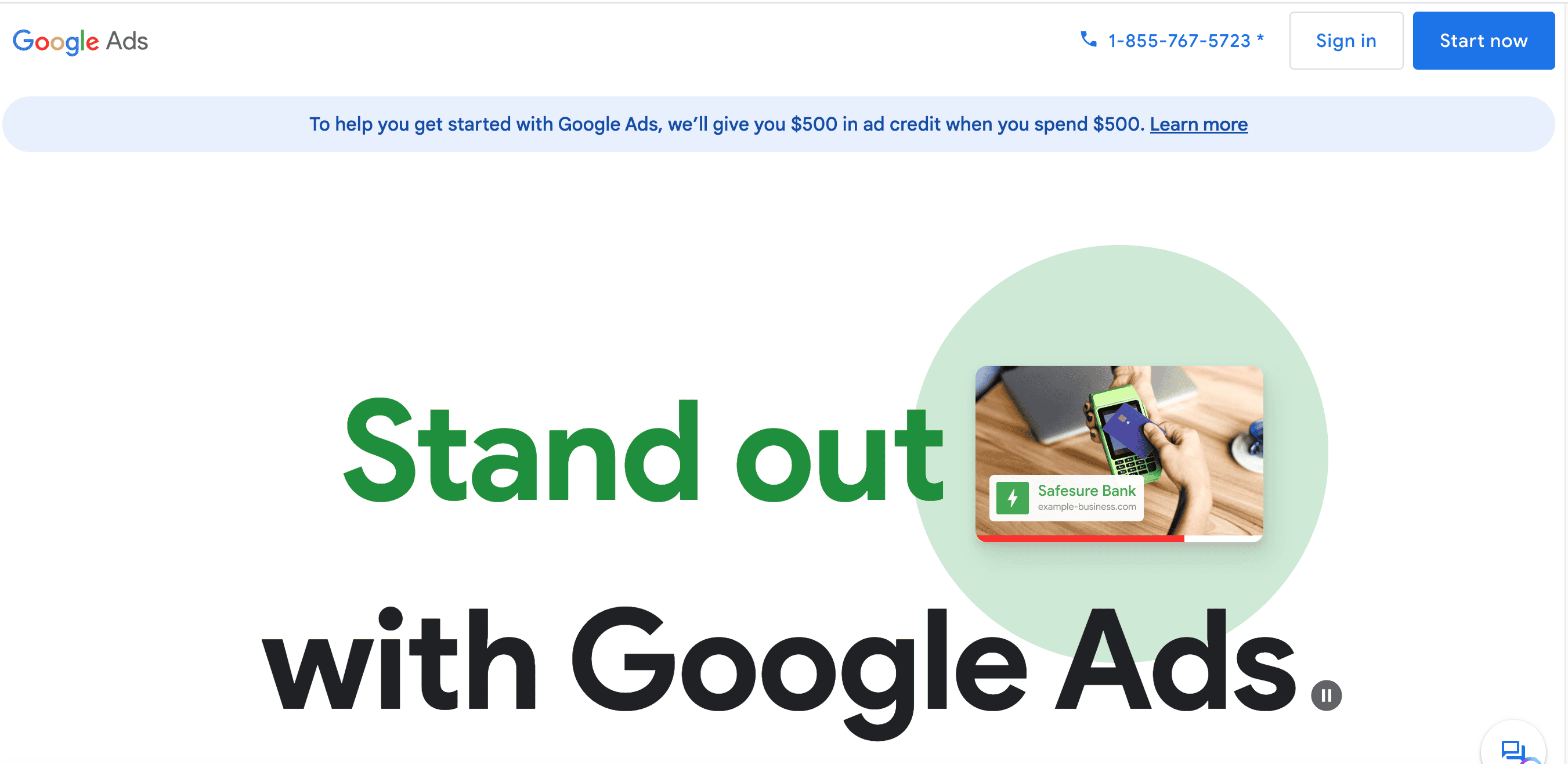
Bid on relevant keywords to display your ads on Google’s search results page and pay only when someone clicks on your ad.
Best for: Businesses with strong online presence and niche products or services.
Success tips: Focus on relevant, long-tail keywords, optimize your landing pages, and monitor your campaigns regularly to improve performance.
How do Google Ads Work
Instead of investing hours in writing SEO optimized content and hoping to rank for specific keywords – you can get you some Google Ads!
Simply select the keywords you want to rank for, also known as keywords your customers are going to type into Google where they should find you, but won’t because your competitors are eating up the first page.
Instead, pay Google to positions at the top of the page.
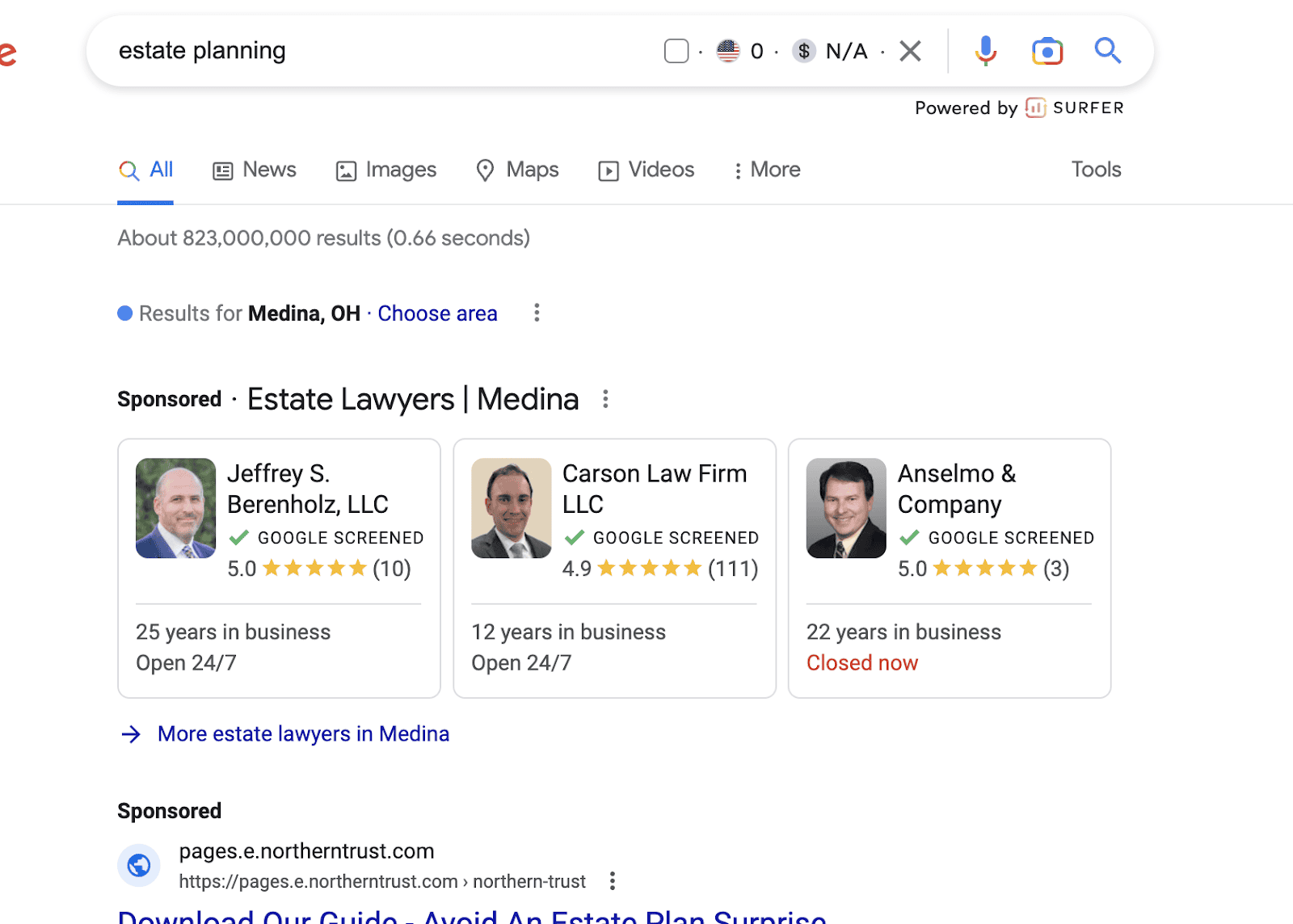
or at the bottom of the page.
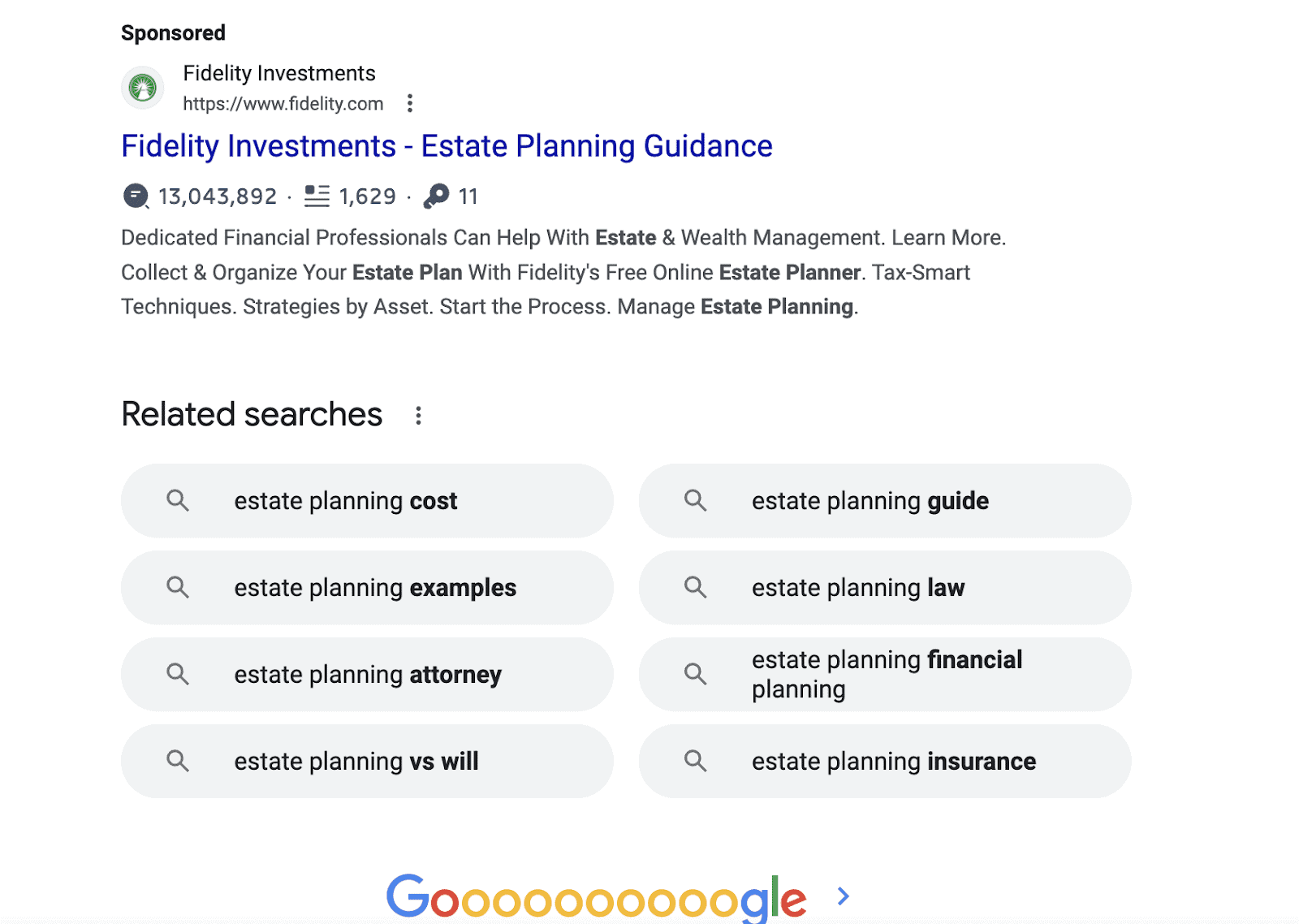
Bid on relevant keywords to display your ads on Google’s search results page and pay only when someone clicks on your ad.
Why use Google Ads for Small Business Advertising
Here are three reasons why investing in Google Ads can provide value for these busy entrepreneurs:
First page placement: Unlike content marketing strategies, which can take time to generate organic traffic, Google Ads can deliver instant visibility for your business.
By bidding on relevant keywords, your ads can appear at the top of the search engine results, driving targeted traffic to your website right away. This immediate visibility allows you to generate leads and sales quickly without waiting for their content marketing efforts to gain traction.
Precise targeting: Google Ads allows you to target your audience with a high level of precision. You can select keywords that your potential clients are likely to search for, as well as refine your targeting based on location, demographics, and even device type.
This kind of targeting means that your ads will be shown to users who are actively searching for the products or services you offer, making it more likely that they will convert into customers.
As a result, you can spend less time creating content to attract your target audience and more time on serving your clients.
Easy scalability and budget control: One of the key advantages of Google Ads is that you can easily scale your campaigns and control your budget.
You can start small and gradually increase your ad spend as you see positive results, or pause campaigns if you need to focus on other aspects of your business.
Google Ads also offers cost-per-click (CPC) bidding, which means you only pay when someone clicks on your ad. This pricing model helps ensure that you’re only spending on ads that drive traffic to your website, and leaving you free to spend your valuable time with clients, adding value.
What you need to know about Google Ads
Let’s outline a few things that you, as an entrepreneur, need to know about Google Ads.
1. Search Terms Report Limitations
In September 2020, Google decided to limit the visibility of some search terms in this report, citing privacy concerns. This means you might not see all search queries, especially those with low volume.
While this change may make it slightly more challenging to identify and add negative keywords, don’t worry! Just keep a close eye on your report and continue refining your keyword strategy.
2. Responsive Search Ads (RSAs)
Have you tried using Responsive Search Ads (RSAs) in your marketing campaigns yet? This ad format allows you to provide multiple headlines and descriptions, which Google then combines and tests automatically to show the most effective ad for each search query.
RSAs can make ad testing and optimization easier, but keep in mind that you’ll be relinquishing some control over your ad copy. If you’re comfortable with that, RSAs can be a powerful addition to your local advertising strategy toolkit.
3. Smart Bidding Strategies
Google Ads offers various automated bidding strategies, known as Smart Bidding, which use machine learning to optimize bids for conversions, clicks, or other goals.
While these strategies can be effective, they might not always line up with your specific goals or preferences. Make sure to understand the implications of using Smart Bidding and consider manual bidding strategies if you prefer more control over your bids.
4. Google Ads Recommendations
You’ve probably noticed that Google Ads provides recommendations to help you optimize your campaigns. While these suggestions can be helpful, just remember that they may not always be in the best interest of your specific goals or budget.
Don’t blindly follow every recommendation! Instead, critically evaluate each suggestion and consider its potential impact on your campaign before making any changes.
5. Display Network Placements
When running Display Network campaigns, Google automatically chooses websites and apps where your ads will appear based on your targeting settings.
Some placements, however, might not be ideal for your brand or target audience. To ensure your ads are shown in relevant places, monitor and manage your placements regularly.
Don’t hesitate to add exclusions for sites or apps that don’t align with your advertising objectives or could negatively impact your ad performance.
Facebook Ads and Boosted Posts
Use Facebook’s detailedtargeting optionsto create highly customized ads that reach your ideal audience on the platform.
Best for: Businesses targeting a wide demographic local customers, particularly B2C companies.
Success tips: Use eye-catching visuals, take advantage of detailed targeting options, and A/B test different ad elements to maximize results.
Why are Facebook Ads Effective
Facebook ads are effective for a few reasons.
-
Your audience is on facebook: With about 3 billion monthly active users, that’s 40% of the global population is finding something they like on Facebook. In fact, 37% of those 3 billion, nearly a billion of them will actually make a purchase from the Facebook platform. That means there’s something for everyone – even B2B businesses on Facebook.
-
Hyper-targeting can’t be beat: Even with recent privacy elements in place, Facebook continues to have outstanding targeting. To be successful, you should be gathering your own information about your customers in order to get the best results.
-
Content flexibility: You can really let your creativity flow with Facebook ads; you can boost an organic post that got good engagement, you can use videos, carousels, etc. There are few limitations on content length or type.
-
Call-to-Action Options: Facebook offers great calls to action, everything from making an appointment, to reading more, downloading, etc.
-
Optimizations: Like with most ad platforms, if you submit multiple versions of your ad, the platform will find the most popular one and optimize for that one. This will help you create newer more effective versions of your ad.
What you need to know about Facebook Ads
In the last few years, Facebook Ads have changed a lot – and if you don’t know or understand these changes, you’re going to be paying a lot more than you need to.
1. Impact of iOS Privacy Changes
You might have heard about Apple’s recent iOS updates and the introduction of App Tracking Transparency (ATT). These privacy changes have a big effect on advertisers, especially on platforms like Facebook.
With ATT, users can choose to limit advertisers’ ability to track their behavior across apps and websites. This means that Facebook Ads’ targeting and attribution may be affected, making it more challenging to reach certain audiences and measure ad performance accurately.
The way to get around this is to collect as much “first party” data from your customers as possible. You can do this by running quizzes, doing polls and surveys with your customers. Then appending that information to your customer list.
Then, create a custom audience that will target those customers, or you can also create a look-alike audience to reach people who are similar to your customers.
2. The Learning Phase
When you start a new Facebook Ads campaign or make significant edits to an existing one, it enters what’s called the “learning phase.” During this time, Facebook’s algorithm is figuring out how to optimize ad delivery for your campaign. You may notice that your ad performance is a bit unpredictable during this phase. Don’t worry – that’s normal! It’s generally recommended to avoid making further changes to your campaign until the learning phase is complete, which usually happens after around 50 optimization events. Patience is key here, so give your campaign some time to stabilize before making any adjustments.
3. Limited Ad Frequency Control
Unlike some other advertising platforms, Facebook doesn’t offer a direct way to limit the frequency with which individual users see your ads. Instead, ad frequency depends on factors like audience size, budget, and campaign duration. It’s important to keep an eye on ad frequency, as high ad frequency can lead to ad fatigue, which negatively impacts your campaign’s performance. To strike the right balance, monitor your ad frequency and make adjustments to your targeting, budget, or ad creative as needed.
4. Relevance Score Replaced with Ad Relevance Diagnostics
In the past, Facebook provided a single relevance score for each ad. However, this has been replaced by three ad relevance diagnostics: Quality Ranking, Engagement Rate Ranking, and Conversion Rate Ranking. These metrics offer more detailed insights into an ad’s performance, helping you identify areas where you can improve. As you analyze your Facebook Ads campaign, use these diagnostics to fine-tune your marketing strategy for better results.
5. Automatic Placements and the Facebook Audience Network
Did you know that Facebook Ads can appear not only on Facebook but also on Instagram, Messenger, and the Facebook Audience Network (FAN)? By selecting “Automatic Placements,” your ads can be shown across these platforms. FAN is a network of third-party apps and websites where your ads can be displayed, potentially increasing your reach and ad performance. However, if you prefer more control over where your ads appear, you can opt-out of FAN. It’s all about finding the right balance between reach and control that works best for your business.
Instagram Ads
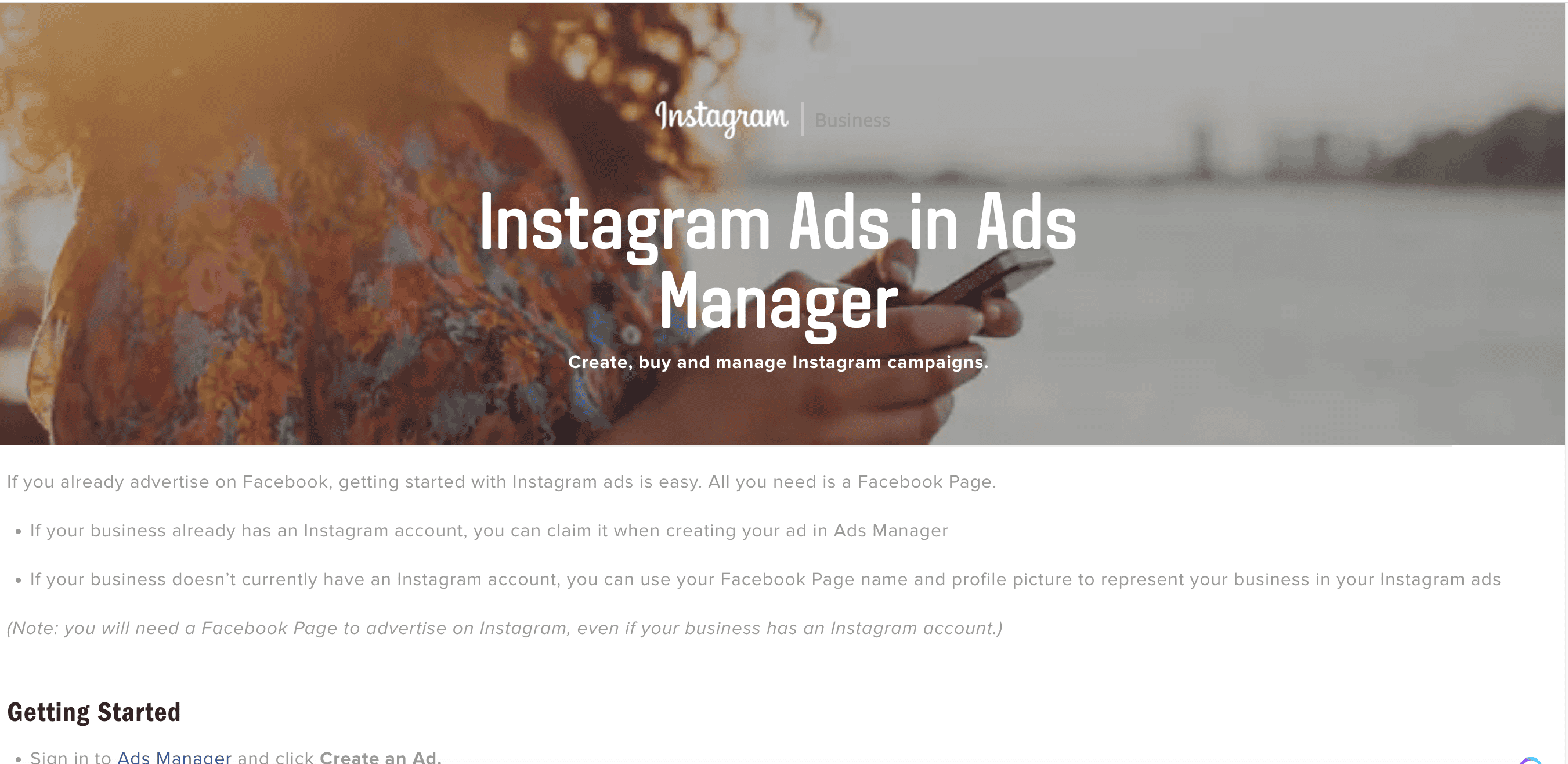
Instagram offers businesses the opportunity to reach their target audience in a highly visual, engaging, and relevant way. Advertisers can now create ads that appear in users’ Instagram feeds or stories. With over 1 billion monthly active users worldwide, Instagram Ads are an increasingly popular option for brands looking to capture attention and drive
Take advantage of Instagram’s visual appeal by creating eye-catching ads that showcase your products or services to a highly engaged audience.
Best for: Visually appealing products or services, lifestyle, and fashion brands.
Success tips: Create high-quality, engaging images or videos, and use hashtags and geotags to increase discoverability.

Why you might want to advertise on Instagram
With just under 3 billion active users, 30% of Instagram users have made a purchase directly from the platform! That’s nothing to sneeze at. That would be like one out of every three people who walk by your store walking in and buying something!
Now get this! Men are 10% more likely to purchase from a social app!
Given these exciting statistics, you just might want to consider advertising on Instagram.
What you need to know about Instagram Ads
Diving into Instagram advertising might feel a bit overwhelming, especially if you’ve never tried it before. To help you get started and make the most of this powerful advertising platform.
Here are three crucial things every entrepreneur should know about Instagram Ads:
Focus on Visual Content Your Audience Relates To
Instagram is a visually-driven platform, which means that eye-catching and engaging visuals are essential for successful ads. High-quality images and videos that resonate with your target audience will capture their attention and encourage them to engage with your ad.
Here are a few hints: If your audience is primarily Millennials, you want to have a more professional and curated look. But, if your audience is Gen Z, they like to see more authentic, gritty, and mismatched images.
Be creative, authentic, and showcase your products or services in a way that highlights their benefits and appeals to your ideal customers.
Precise targeting options
One of the major strengths of Instagram Ads is the extensive targeting options available. Precise targeting options can help businesses optimize for local searches and enhance visibility. Since Instagram is owned by Facebook, you can access the same powerful targeting capabilities that Facebook Ads offers.
This means you can target your ads based on demographics, interests, behaviors, and even custom audiences, such as website visitors or your email list. Take the time to define your ideal customer and utilize these targeting options to ensure your ads are seen by the right people.
Test and Optimize
Like any advertising platform, success with Instagram Ads requires continuous testing and optimization.
Don’t be afraid to experiment with different ad formats (such as single image ads, carousel ads, or video ads), ad copy, and targeting options.
Monitor your ad performance, and use the data to refine your campaigns and improve your results over time. This iterative process will help you identify what works best for your audience and ultimately lead to a higher return on investment.
LinkedIn Ads
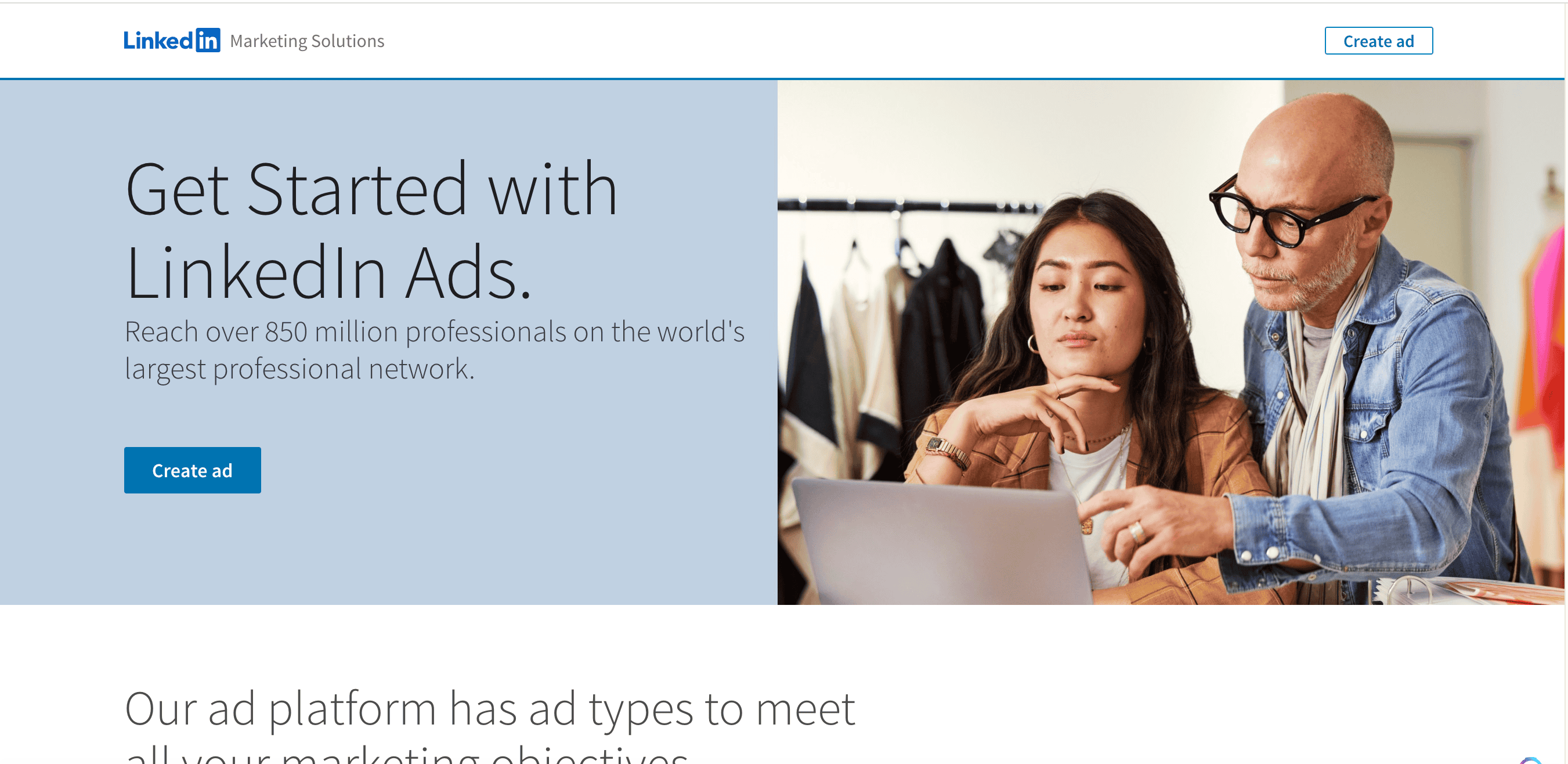
Reach a professional audience by running sponsored content, InMail, or display ads on the LinkedIn platform.
Best for: B2B businesses and professional services targeting specific industries or job roles.
Success tips: Tailor your message to your target audience, use clear calls-to-action, and monitor analytics to optimize your campaigns.
Are LinkedIn Ads Worth It?
It’s a well known fact that LinkedIn Ads are some of the most expensive ad placements you can make online. Let’s talk about why that is
Smaller Audience
LinkedIn is a professional networking platform with a monthly user base of 900 million professionals, businesses, and decision-makers.
This niche audience can be highly valuable for advertisers, particularly in the B2B space, and the platform’s unique targeting capabilities allow for precise targeting of these individuals. Utilizing local newspapers for advertising, such as classified ads and print advertisements, can also be effective in reaching community members who regularly read print media.
Higher purchasing power
LinkedIn users often have higher income levels and more influence in decision-making processes within their organizations. As a result, advertisers are often willing to pay a premium to reach this audience, which can drive up the cost of advertising.
Less competition
Compared to other social media platforms like Facebook and Instagram, LinkedIn has fewer advertisers vying for ad space. This means there’s less competition, which can lead to higher costs as advertisers are willing to pay more for ad placements.
Ad auction
LinkedIn, like other advertising platforms, uses an auction system to determine ad placements and costs. The high value of the platform’s audience and the specific targeting options can lead to higher bids from advertisers, resulting in increased costs.
Lead quality
Many advertisers find that the leads they generate from LinkedIn ads tend to be of higher quality than those from other platforms. This is due to LinkedIn’s professional nature and the detailed targeting options available. Advertisers are often willing to pay more for these high-quality leads, which contributes to the overall higher cost of LinkedIn ads.
What you need to know about LinkedIn Ads
Use LinkedIn’s native ad formats
LinkedIn offers native ad formats like Sponsored Content and Sponsored InMail, which can drive higher engagement and conversion rates compared to traditional display ads. Experiment with these formats to see which works best for your campaigns.
Use the LinkedIn Insight Tag
The LinkedIn Insight Tag is a small piece of JavaScript code that you can add to your website to gain valuable insights about your website visitors and track conversions from your LinkedIn ads. By implementing this tag, you can better understand the performance of your campaigns and optimize them accordingly.
Optimize for mobile
With a significant portion of LinkedIn users accessing the platform via mobile devices, it’s crucial to ensure your ads are optimized for mobile viewing.
Use shorter headlines and copy, as well as mobile-friendly images and videos, to make your ads more effective on smaller screens.
YouTube Ads
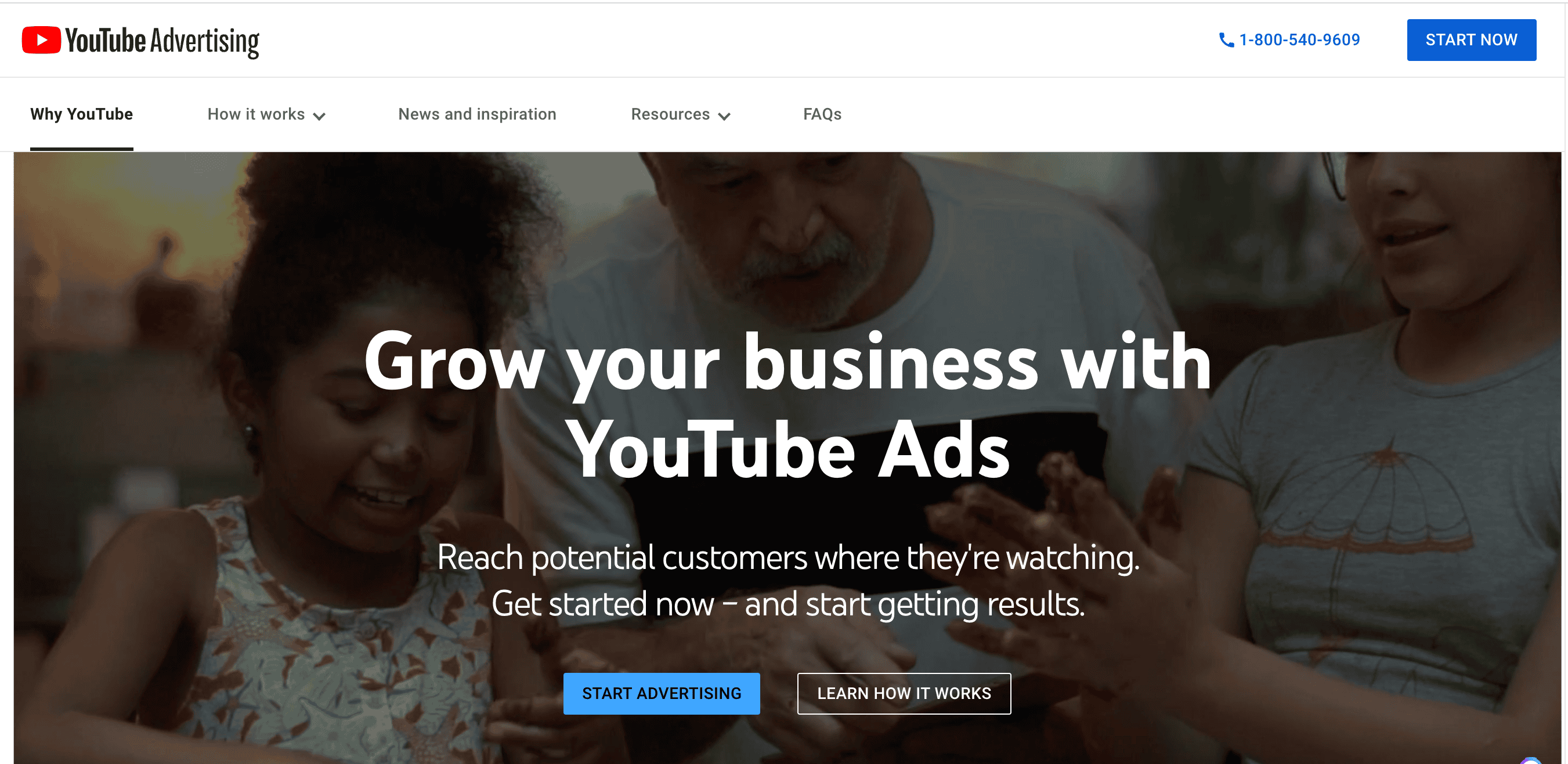
Promote your business through engaging video ads that play before or during relevant YouTube content.
Best for: Businesses with engaging video content or those targeting a younger audience.
Success tips: Create high-quality, compelling videos, use clear calls-to-action, and segment your audience for targeted campaigns.
Are YouTube Ads Effective?
What you need to know about YouTube Ads
Pinterest Ads
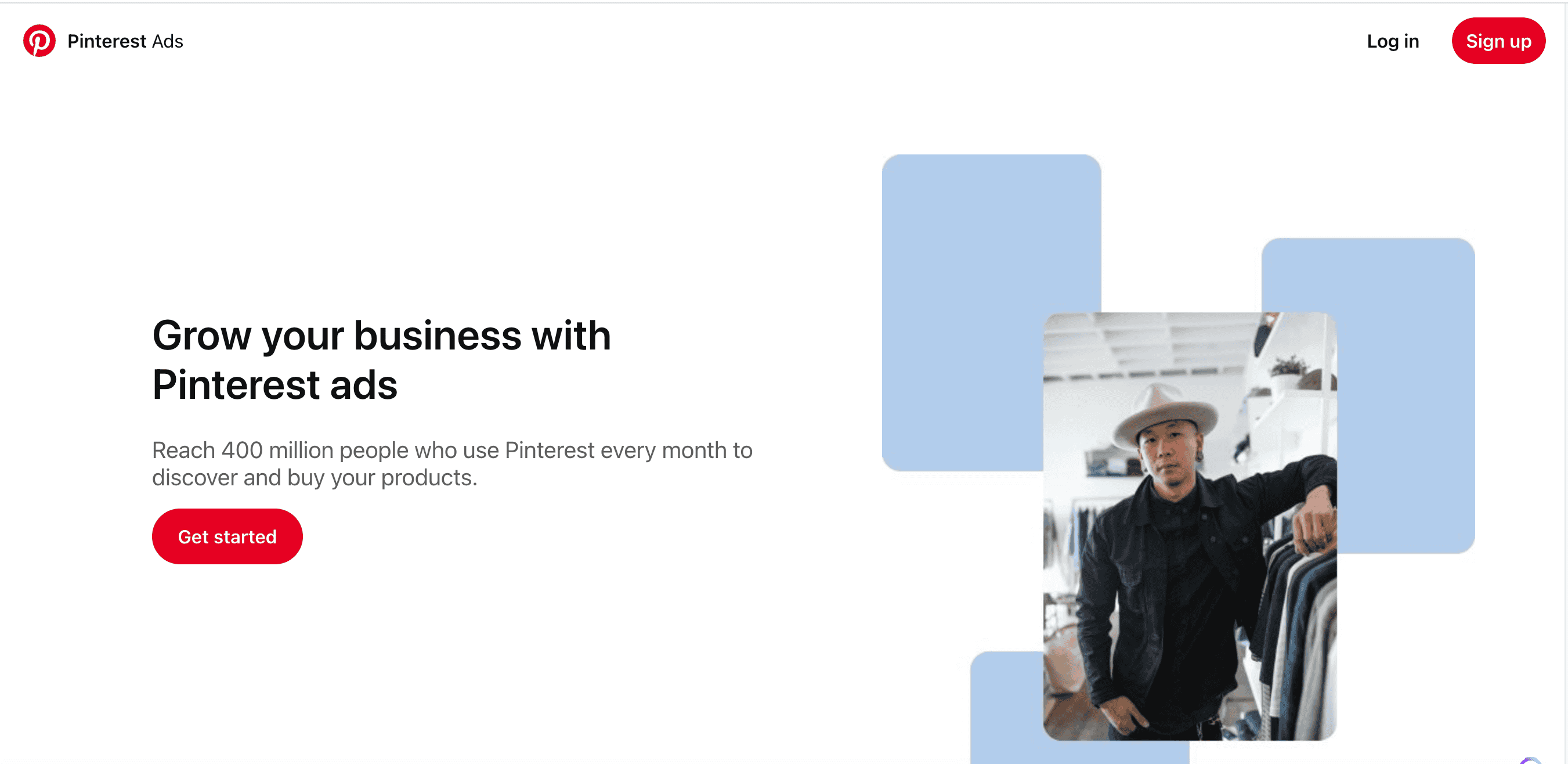
Drive leads and sales by showcasing visually appealing products or services through eye-catching, high-quality Pins and Promoted Pins.
Best for: Businesses in industries like home decor, fashion, DIY, and food, or those with visually captivating content.
Success tips: Design standout vertical images, use strategic keywords and hashtags for discoverability, and regularly monitor and optimize your ad campaigns for improved results.
Are Pinterest Ads Effective?
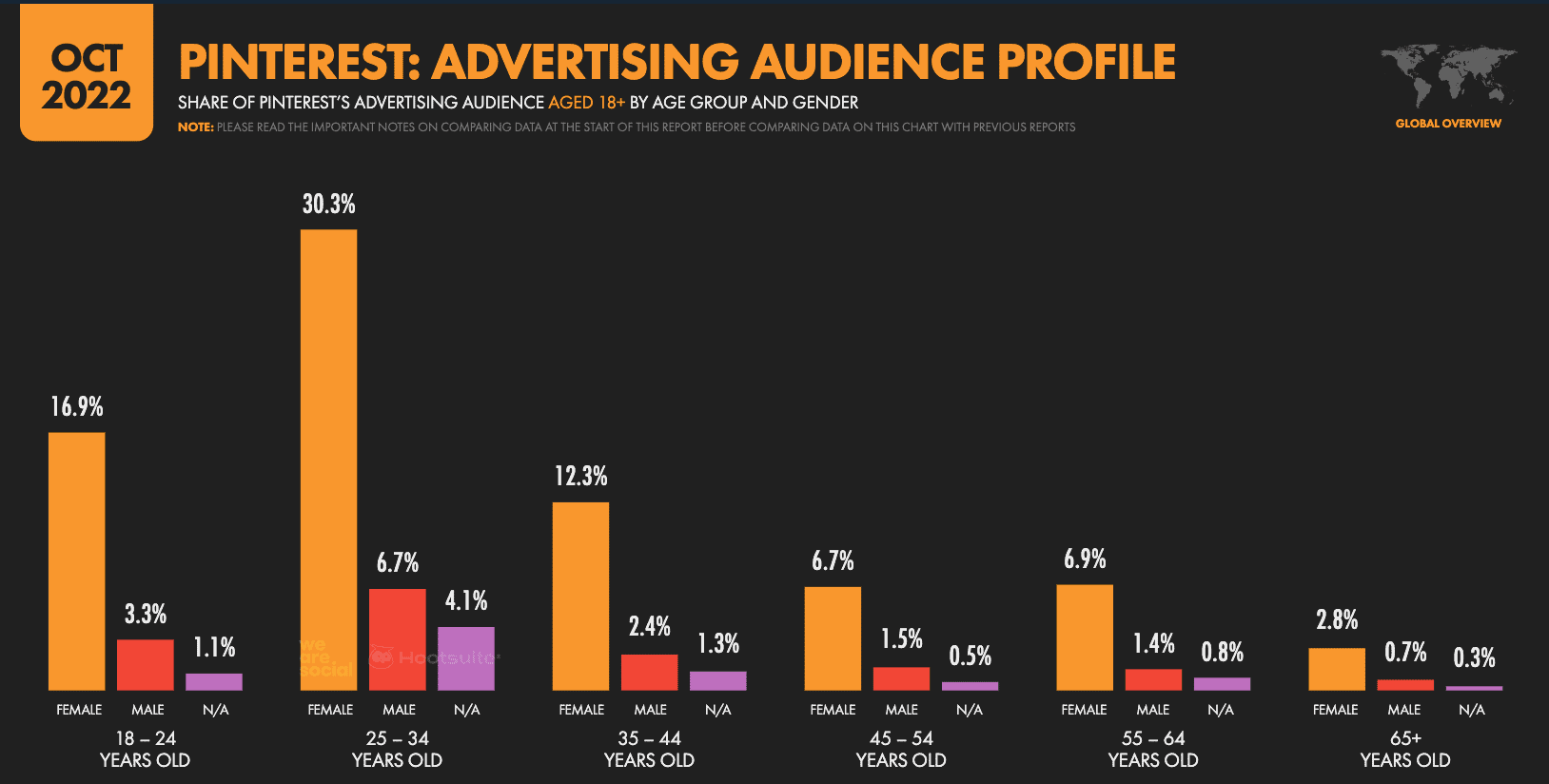
You be the judge. Here are some startling statistics about Pinterest. Pinterest reported 445 million monthly active users. This is less than LinkedIn, but there’s something very special about Pinterest and Pinterest Ads that should make you think.
Pinterest ads deliver a 32% higher return on ad spend than other digital platforms.
Pinterest ads generate a 2.3x more efficient cost per conversion than other social media sites.
People who use Pinterest weekly are 7x more likely to say it’s the most influential platform in their purchase journey, compared to social media platforms.
What you need to know about Pinterest Ads
Tailored targeting with Actalike audiences
Beyond Pinterest’s standard targeting options, you can create Actalike audiences, which are similar to Facebook’s Lookalike audiences.
This feature allows you to target users who resemble your existing engaged audience, making it more likely to reach high-converting users.
Pincodes for offline integration
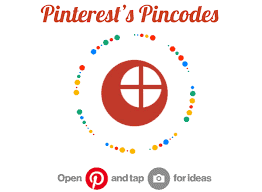
Use Pincodes, unique QR-like codes that can be added to your offline marketing materials (e.g., packaging, brochures, or in-store displays). When users scan the code with the Pinterest app, they’re directed to your profile, boards, or specific Pins, providing a seamless online-offline marketing experience.
Time your campaigns with Pinterest’s search trends
Pinterest Ads experts know that users’ search behavior on the platform follows specific patterns throughout the year.
By monitoring these trends and scheduling your campaigns accordingly, you can increase the likelihood of reaching users when they’re most receptive to your content.
Utilize the Pinterest Tag for advanced conversion tracking
The Pinterest Tag is a piece of JavaScript code that you can add to your website to track user actions and measure the effectiveness of your ad campaigns. It enables you to track events like page visits, sign-ups, and purchases, which helps you optimize your campaigns for better performance.
Leverage Story Pins for increased engagement
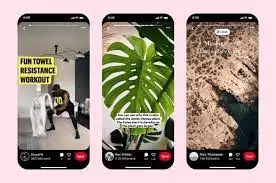
Story Pins are a relatively new feature that allows you to create immersive, multi-page stories with images, videos, and text.
These Pins can drive higher engagement and can be promoted as ads to reach a larger audience. However, note that this feature may not be available to all advertisers yet.
Streaming Audio Advertising
Reach your target audience through targeted audio ads that play between songs during users’ streaming sessions on platforms like Spotify and Pandora.
Best for: Businesses looking to engage a diverse audience, particularly those who regularly consume music or podcasts.
Success tips: Create engaging and memorable audio ads with a strong hook, consider using promo codes or special offers to entice listeners, and direct them to a dedicated landing page to track conversions and measure the effectiveness of your campaign.
What is Streaming Audio Advertising
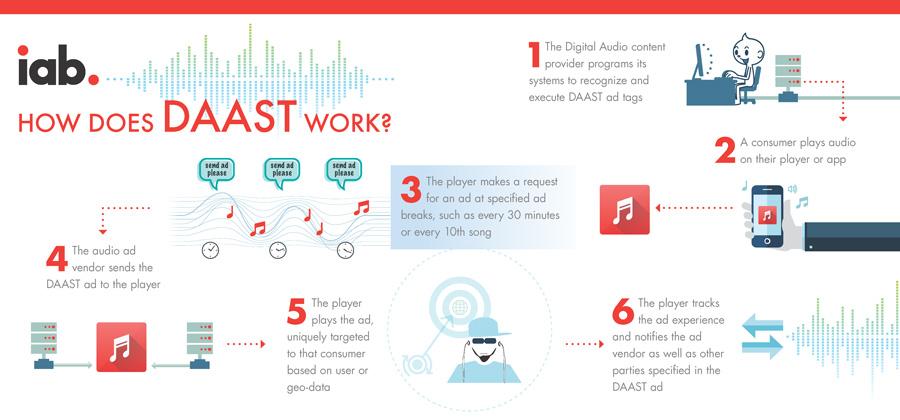
Similar to traditional radio advertising, streaming audio ads allow businesses to target their audience based on various factors such as demographics, location, listening preferences, or even specific playlists.
However, streaming audio advertising has the added advantage of providing more precise targeting and detailed performance metrics, helping businesses measure the effectiveness of their ad campaigns and optimize them accordingly.
Streaming audio advertising can include various ad formats like short audio clips, sponsored playlists, or branded content. The key to successful streaming audio advertising is creating engaging and relevant audio content that resonates with the target audience and aligns with their listening preferences.
What you need to know about streaming audio advertising
Utilize dynamic creative
Dynamic creative allows you to tailor your ad content to individual listeners based on their demographics, interests, or listening behavior. This personalization can lead to higher engagement and a more memorable ad experience for your audience.
Leverage companion banners
Many streaming audio platforms offer the option to display a visual companion banner alongside your audio ad. This can help reinforce your brand message, increase ad recall, and drive users to take action.
Use sequential messaging
With sequential messaging, you can deliver a series of ads to the same listener over time, allowing you to tell a more comprehensive story or progressively reveal different aspects of your product or service.
Cross-device targeting
Leverage cross-device targeting to reach your audience across various devices like smartphones, tablets, desktops, or smart speakers.
This ensures a more seamless and cohesive advertising experience, allowing you to engage with your audience no matter which device they’re using to access the streaming platform.
Sponsor exclusive content or playlists
Partner with streaming platforms to sponsor exclusive content, such as custom playlists, branded stations, or even podcast episodes.
This not only helps you reach a highly engaged audience but also associates your brand with a memorable and unique listening experience that can help foster brand loyalty.
Sponsored Content

Collaborate with publishers to create informative, engaging content that promotes your business while blending seamlessly with their editorial content.
Best for: Businesses looking to establish thought leadership and reach a targeted audience.
Success tips: Collaborate with reputable publishers, create high-quality, informative content, and align your brand message with the publisher’s audience.
How does sponsored content help promote your local business?
Sponsored content means that you are paying a publisher to either publish your content or write custom content for you.
The goal of sponsored content is to leverage the publisher’s traffic and reputation.
What are you paying for in terms of sponsored content with a publisher?
If you’re posting content you created on a publisher’s site, you’re paying for any promotion they do of your content, or you’re paying for the traffic and exposure.
If the publisher is creating the content for you – you’re paying for that content creation in addition to traffic and awareness.
Helpful insider tips for leveraging sponsored content
Build long-term relationships
Instead of focusing solely on one-off sponsored content deals, aim to build long-term relationships with publishers.
This can lead to more consistent and valuable exposure for your brand, as well as opportunities for cross-promotion, exclusive content, or even co-branded initiatives.
Tap into niche influencers
When partnering with publishers or content creators, consider working with niche influencers who may have smaller but highly engaged audiences.
These influencers can provide a more authentic connection with their audience and drive higher engagement rates for your sponsored content.
Ask for native ad formats
Use native ad formats that blend seamlessly with the publisher’s editorial content. This can help reduce ad fatigue and increase the likelihood of your target audience engaging with your sponsored content.
Experiment with content formats
Don’t be afraid to try new content formats or unconventional small business advertising ideas to effectively utilize your advertising budgets. This could include interactive content, long-form articles, listicles, or even quizzes. Mixing up the formats can keep your sponsored content fresh and engaging for the audience.
Focus on value, not sales
While the ultimate goal of sponsored content is to promote your business, avoid being overly promotional or salesy.
Instead, focus on providing value to the audience by addressing their pain points or offering solutions to their problems.
Collaborate on promotion
Work closely with the publisher to ensure that your sponsored content is effectively promoted across their channels, such as social media, email newsletters, or even their homepage. This can help drive more traffic and engagement for your content.
Monitor and respond to comments
Engage with readers who comment on your sponsored content by answering questions, addressing concerns, or simply thanking them for their feedback.
This can help foster a positive relationship with your audience and make your brand more approachable.
Native Advertising
Design ads that mimic the look and feel of the platform they appear on, creating a less intrusive experience for users.
Best for: Businesses aiming for a seamless integration of their ads with the platform’s content.
Success tips: Design ads that match the platform’s look and feel, create valuable content for the user, and track performance to optimize your campaigns.
What is native advertising?
Native advertising is a form of paid advertising where the ad content seamlessly blends with the surrounding editorial content on a platform, making it less intrusive and more engaging for the audience.
The goal of native advertising is to create a more natural and cohesive user experience by presenting ads that match the look, feel, and function of the platform on which they appear.
Typically, native ads are designed to provide value to the audience through relevant and informative content, rather than simply promoting a product or service. Examples of native advertising include sponsored articles, in-feed ads on social media platforms, and sponsored content within mobile apps or websites. Native advertising is popular because it can help improve user engagement and click-through rates, as users are more likely to interact with ads that appear as part of the content they are already consuming.
Helpful insider tips for successful native advertising
Leverage exclusivity
Offer exclusive content, data, or insights in your sponsored content that can’t be found elsewhere. This will make your content more valuable and enticing for the audience, increasing the likelihood of engagement and sharing.
Use micro-influencers
Instead of going for big-name influencers or publishers, consider partnering with micro-influencers who have smaller but highly engaged and loyal followings.
They often provide a better return on investment and can drive more genuine engagement for your sponsored content.
Power up your storytelling
Craft your sponsored content in the form of a captivating story that draws readers in and subtly showcases your product or service.
This approach can create a more memorable and authentic connection with your audience, making your content more shareable and impactful.
Repurpose and expand
After a successful sponsored content campaign, consider repurposing the content into different formats like infographics, videos, or podcasts to reach new audiences and platforms.
This will extend the life and reach of your content while maximizing your investment.
Podcast Advertising
Sponsor popular podcasts in your industry, and reach a highly engaged audience with targeted audio ads.
Best for: Businesses targeting niche audiences or those in specific industries.
Success tips: Choose podcasts with a highly engaged audience, create a compelling and concise ad message, and offer special promotions or discounts to entice listeners.
What is podcast advertising?
Podcast advertising basically means that you pay the podcast host to feature your business during the podcast. No matter what industry you’re in, there’s probably a related podcast that’s dying for a sponsor or advertiser.
One of the big benefits of finding podcasts in your niche to advertise your business is that it can be surprisingly affordable.
What are some helpful tips for taking advantage of podcast advertising?
Leverage podcast directories and search engines
Use podcast directories like Apple Podcasts, Spotify, or Stitcher, and niche-specific podcast search engines to find podcasts in your target niche. Look for keywords, categories, and topics related to your industry to discover potential podcast partners.
Analyze podcast reviews and rankings: Check podcast reviews and rankings to gauge the popularity and credibility of potential podcast partners. High-rated podcasts with positive reviews are more likely to attract a loyal and engaged audience.
Reach out with a personalized pitch
When contacting podcast hosts, craft a personalized message that highlights the unique value your product or service can bring to their audience. Mention specific episodes or content that resonated with you to demonstrate your familiarity with their show.
Offer a win-win collaboration
Rather than just focusing on what you can gain, consider how you can support the podcast host in return. This can include sharing their content on your social media channels, featuring them on your blog, or offering a special discount for their listeners.
Be creative with sponsorship options
Instead of sticking to a fixed compensation structure, explore different options such as a flat fee, cost per acquisition (CPA), or even a revenue-sharing model. This allows both parties to find a mutually beneficial arrangement.
FAQs
What are the best ways to advertise a small business?
The best ways to advertise your small business are to make sure that your ideal customers are on the channel where you put your advertising. Seems obvious, but if you’re NOT getting any calls, clicks, or interests your advertising channel and audience are not matching up.
How can social media help in advertising a small business?
The best thing about social media is that it’s a great way to integrate your organic content with your ads. For example, if you are advertising a backpack, you can post organic content of yourself or your customers using that backpack on a hike.
What is local SEO, and why is it important for small businesses?
If your business serves local customers, it’s very important to use local SEO in your content and your marketing — especially Google My Business. Make sure that you’re keeping your information, hours, phone numbers updated.
Why should small businesses invest in email marketing?
Email marketing continues to be the best and most profitable marketing strategy. It’s the fastest way to get in touch with your customers and prospects. Data shows that most customers and prospects love receiving discounts and coupons from your business in their email.
Is Advertising Right for You?
There you have it! We’ve explored some creative and impactful ways to leverage various advertising channels to grow your business. As an entrepreneur, it’s essential to continuously review your goals, assess your budget, and consider the costs of creating your own content. Sometimes, it might make more sense to shift your focus to advertising, especially when you can find the right platforms and partners to help you reach your target audience.
Remember, advertising can be a fantastic way to connect with potential new customers, who share the same interests as your brand. It’s all about finding the right fit and making sure your message resonates with your audience. So, go ahead and dive into the world of advertising, and who knows, you might just discover a whole new world of opportunities waiting for you!
Good luck on your advertising journey, and here’s to achieving great success for your business!